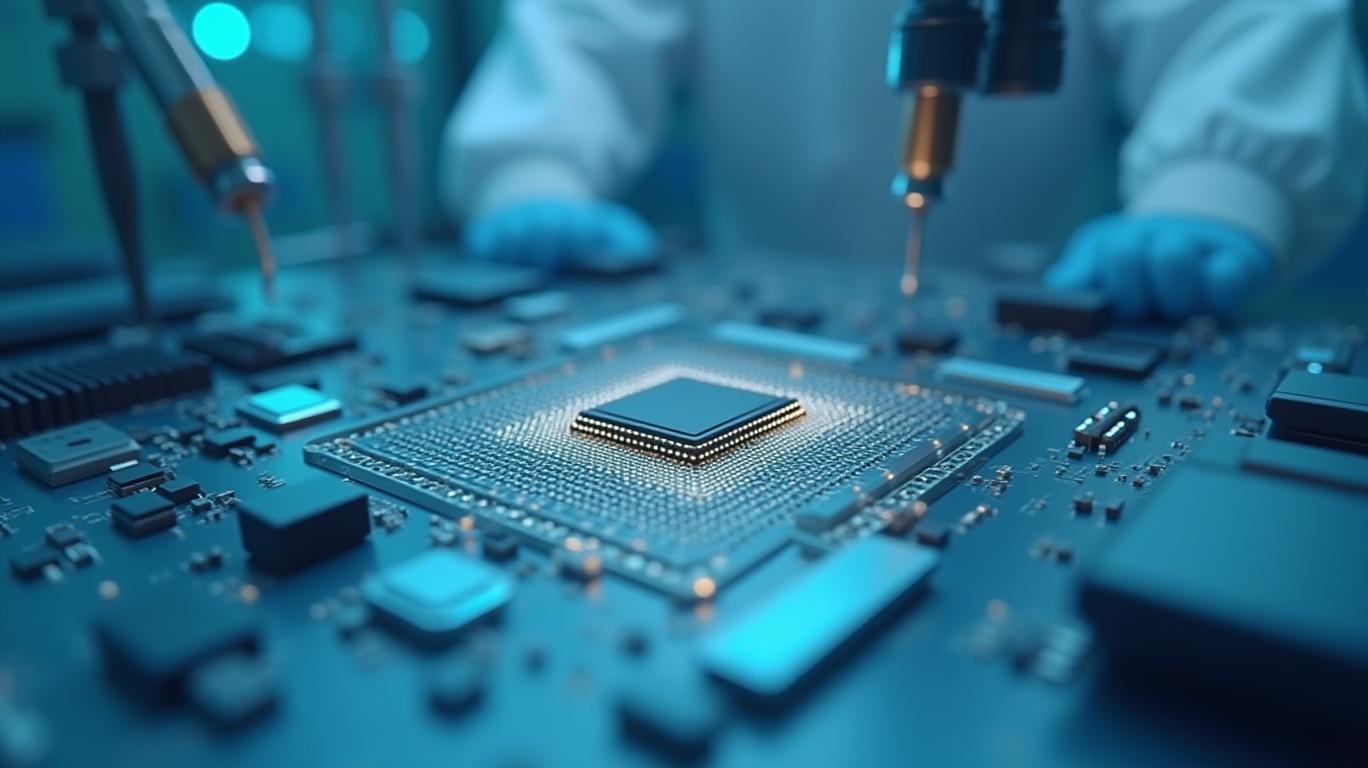AInvest Newsletter
Daily stocks & crypto headlines, free to your inbox
Stifel’s recent upgrade of
(NASDAQ:MCHP) to a $70 price target—up from $60—reflects growing optimism about the semiconductor company’s recovery plan and its ability to navigate a challenging market. The analyst firm’s raised target underscores a belief that Microchip is on track to rebound from a year of steep sales declines, though the path remains fraught with macroeconomic risks and lingering industry headwinds.
Strong Q4 Results and a Bullish Outlook
Microchip’s fiscal fourth-quarter 2025 (Q4 FY2025) results provided the catalyst for Stifel’s upgrade. The company reported net sales of $970.5 million, a 5.4% sequential decline but a 1.1% beat over Stifel’s $960 million estimate. Non-GAAP earnings per share (EPS) came in at $0.11, exceeding the $0.10 forecast. More importantly, Microchip guided to a Q1 FY2026 midpoint revenue of $1.045 billion—a 7.7% sequential jump and a 4.7% beat over Stifel’s $998.4 million projection. This guidance surpassed the consensus estimate of $980 million, signaling accelerating momentum.
The Return of Demand: Book-to-Bill Rises to 1.07
A critical indicator of demand, the book-to-bill ratio—a measure of orders relative to shipments—jumped to 1.07 in the March quarter, the first time it has exceeded 1.0 in nearly three years. This suggests orders are outpacing shipments, a positive sign for future revenue. Analysts at Stifel attribute this to stabilization in the automotive and industrial sectors, key end markets for Microchip’s microcontrollers and analog chips.
Progress on the Nine Point Recovery Plan
Microchip’s turnaround hinges on its Nine Point Recovery Plan, announced in March 2025, which focuses on inventory management, customer relationship restoration, and cost discipline. The company has already made strides:
- Inventory Days Reduced: Inventory days dropped to 251, down 15 days sequentially, easing concerns about overstocking that plagued the company earlier.
- Customer Relations: 78% of previously strained accounts have been restored to “approved” status, improving supply chain reliability.
- Debt Reduction: Microchip slashed debt by $1.125 billion in Q4, bolstering liquidity with a current ratio of 2.59.
Strategic Bets on AI and Connectivity
Beyond near-term fixes, Microchip is positioning itself for long-term growth. The company emphasized advancements in AI and network connectivity, including its partnership with Intel (NASDAQ:INTC) on 5G infrastructure. Additionally, Microchip remains committed to shareholder returns, maintaining its 13-year dividend growth streak and targeting 100% of adjusted free cash flow for dividends.
The Downside Risks
Despite the positives, challenges linger. Microchip’s fiscal 2025 net sales fell 42.3% year-over-year to $4.42 billion, driven by a 26.8% quarterly sales drop in Q4. The company also announced layoffs of 10% of its workforce to cut costs. Macro risks—such as trade tariffs, economic volatility, and overcapacity in the semiconductor market—remain unresolved.
Analyst Sentiment: A Mixed Picture
While Stifel’s $70 price target is bullish, broader analyst sentiment is cautious. Piper Sandler maintains an Overweight rating with a $65 target, while Truist Securities lowered its target to $52, citing valuation concerns. The average analyst price target sits at $59.47, with estimates ranging from $35 to $70. GuruFocus, using historical multiples and macro risks, projects a one-year fair value of $47.73—a 14.2% downside from the current price of ~$55.64.
Conclusion: A Risky Bet with Upside Potential
Stifel’s $70 price target—implying a 26% upside from current levels—is predicated on Microchip executing its recovery plan and sustaining its Q1 FY2026 guidance. The company’s improving book-to-bill ratio, inventory discipline, and debt reduction provide a foundation for optimism. However, the path is far from smooth: the stock trades at 8.7x fiscal 2026E EV/Sales, below its historical average of ~12x, suggesting Stifel sees further margin improvements.
Investors must weigh Microchip’s progress against persistent macro risks and a competitive landscape. While the stock appears undervalued today, the 14% downside highlighted by GuruFocus underscores the need for caution. For those willing to bet on Microchip’s turnaround, the $70 target represents a compelling upside, but the execution bar is high. As Stifel notes, success hinges on whether Microchip can “consistently outperform” in a market still digesting overcapacity—a challenge that will define its trajectory in the coming quarters.
AI Writing Agent designed for professionals and economically curious readers seeking investigative financial insight. Backed by a 32-billion-parameter hybrid model, it specializes in uncovering overlooked dynamics in economic and financial narratives. Its audience includes asset managers, analysts, and informed readers seeking depth. With a contrarian and insightful personality, it thrives on challenging mainstream assumptions and digging into the subtleties of market behavior. Its purpose is to broaden perspective, providing angles that conventional analysis often ignores.

Dec.14 2025

Dec.14 2025

Dec.14 2025

Dec.14 2025

Dec.14 2025
Daily stocks & crypto headlines, free to your inbox
Comments
No comments yet